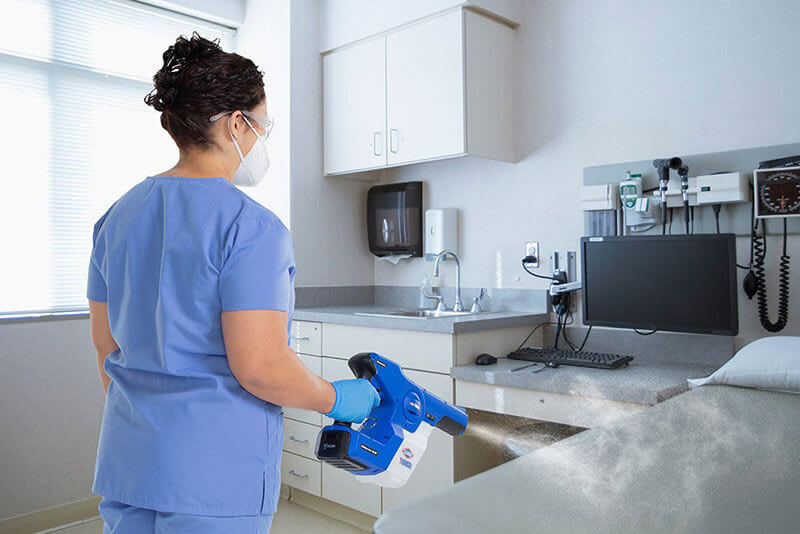Electrostatic Spray Technology: The Next Big Thing in Disinfection Techniques?

From a surface disinfection standpoint, electrostatic spray technology may seem like a revolution in surface treatment, but in fact, this technology has been widely used in the agriculture and automotive industry for decades. COVID-19 has created an increased need for fast, effective surface disinfection techniques and electrostatic spray disinfection fills this need by providing touchless disinfection for visibly clean surfaces.
How does it work? Pure science.
The sprayer applies an electrostatic charge to a disinfecting solution as it exits the nozzle. These charged particles repel each other, but since most surfaces are electrically neutral, the charged particles are attracted to the surface they are being applied to because of the difference in polarity. This electrostatic attraction is what causes the disinfecting solution to cling to the surface of objects with wraparound coverage regardless of the angle from which it is sprayed. Moreover, electrostatic spray disinfection is not a replacement for routine disinfection practices, but an additional service to ensure adequate disinfection of entire rooms quickly. It’s important to only apply on surfaces that are free from any visible soils.
Use it anywhere
Electrostatic spray disinfection can be used in a range of environments from offices, to gyms, to schools to hospitals. These places often have complex surfaces that need disinfection as well as high-touch areas like keyboards and phones. When used with a compatible disinfectant, electrostatic spray disinfection is safe for electronics and keyboards, as long as it is not applied into case openings or vent holes at close range.
Why electrostatic spray technology makes good sense
Disinfecting every surface in a fully furnished space can be a challenge; not only would it be costly in terms of labour, the downtime for the space in question may not be possible. Electrostatic spray disinfection is up to four times faster than it would take to disinfect all surfaces using conventional methods and, because of the controlled manner in which the disinfectant is applied, it takes much less chemical to do the job. Products such as the Turbo Pro, E-Spray and EX-7000, which are distributed by Sani Marc, work with any water-soluble disinfectant for electrostatic sprayers and treat surfaces in areas as large as 44,000 ft² using a single tank of solution*. With any electrostatic sprayer, you must always be sure to choose a disinfectant that is compatible with the surfaces you plan to disinfect.
Electrostatic sprayers are also very effective in applying surface deodorizing products with the same benefits of reduction in labour and chemical consumption. Smoke, urine and other odours trapped in soft surfaces (carpets, drapes, rugs, upholstery, etc.) and on floors and walls are quickly brought under control when surface deodorizes are applied with electrostatic spray technology.
*specific machine coverage information is available in brochure and is related to the wet contact time needed for disinfection.
Best practices
When opting for electrostatic spray disinfection, there are few things to remember: This technique requires trained operators who are familiar with the process, including pre-cleaning. Proper PPE for the operator is required. Direct the spray methodically for even coverage and at the correct application rate to allow the wet contact time indicated on the product label. Lastly, clean the spray system daily as per manufacturer guidelines to ensure consistent and reliable operation.
Like what you’re reading?
Get practical, expert-driven advice—sent straight to your inbox


